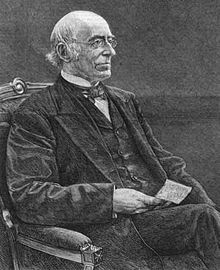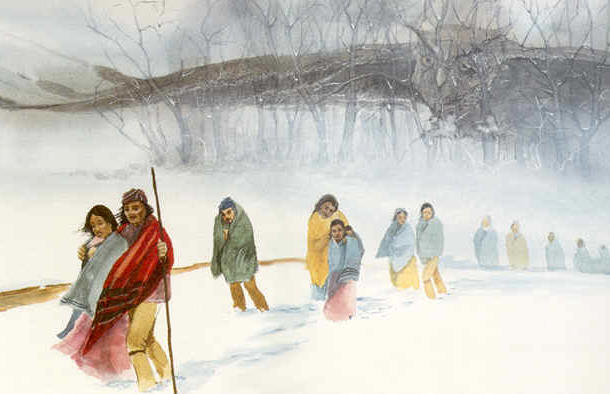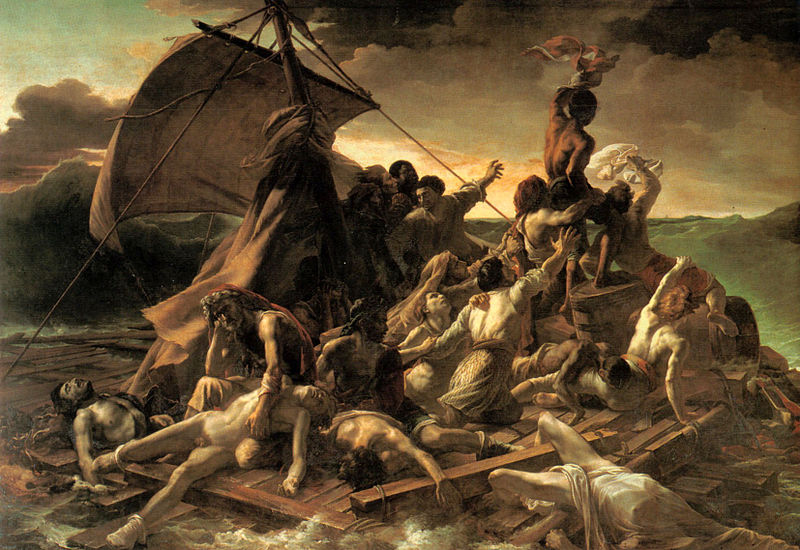This chapter outlines the various changes and movements in politics, economics, philosophy, art, and many other aspects of society that occurred between roughly 1815 and 1850. Among these are the Congress of Vienna, the conservative assembly that restored much of what Napoleon had changed; the revolutions of 1848 and their numerous motivations and characteristics; the policies of Klemens von Metternich and others who attempted to suppress these revolts; the legislation being passed in Britain and the reactions it prompted, including the Corn Laws; and the movements of conservatism, liberalism, nationalism, socialism, communism, and romanticism.
Objective: Learning more about the content of this chapter and other important people and events from the first half of the nineteenth century, and understanding how they relate to the contemporary movements and revolutions.
Essential Question
What role did “isms” play in the revolutions of 1848? The ideologies that emerged in nineteenth-century Europe played a significant role in the revolutions and citizen uprisings of 1848. Philosophies and ideas (“isms”), most of which were political or economical, spread among the citizens of European nations. Much of the population was dissatisfied with their current governmental or socioeconomic situation, especially due to the changes made by Napoleon and the Industrial Revolution. The new ideologies inspired and empowered them to attempt to fix things, leading to the revolutions that European nations faced in 1848.
People in the News
Charles Fourier
Charles Fourier (1760-1825) was a prominent French Utopian socialist whose ideas were seen as very radical during his time, but became much more influential after his death. He sought to liberate each individual through education and the expression of human passion. His way of thinking was mathematical and idealistic, which is apparent in his plans for “phalanxes,” or Utopian planned communities of 1,620 people. In his opinion wealth should be determined by one’s profession, and he sought to eliminate poverty more than the entire class structure. He was also a women’s rights advocate and coined the word feminism. Fourier’s socialist philosophies are said to have contributed to the 1848 Revolution in France and the Paris Commune, and many Utopian communities were inspired by his ideas, notably La Reunion in Texas.
Victor Hugo
To this day one of the best-known romantic writers is Victor Hugo (1802-1885) from France. Hugo wrote an enormous amount of work which included books, poems, and plays, and he even produced a comparable quantity of drawings. Hugo developed his attitude of romanticism around the time he began to support Napoleon I as a young man. He often eloquently mixed political opinions with general thoughts and insightful observations in his writing, such as in this passage from his novel Les Misérables (1862), a universally recognized work whose musical adaptation was recently performed at the Community Arts Center in Williamsport:
“The daylight of history is merciless; it has the strange and magical quality that, although it is composed of light, and precisely because of this, it casts shadows where once only brilliance was to be seen, making of one man two images, each opposed to the other, so that the darkness of the despot counteracts the majesty of the leader.”
Hugo was an involved and outspoken republican who strongly advocated liberty and pacifism. He was elected to the Legislative Assembly and the Constitutional Assembly before being exiled from France when Napoleon III took power. Because of his involvement in politics, many of the works authored by Victor Hugo portray or symbolize the situation in France and Europe at the time, making them especially useful for the study of history. In addition, a large number of his stories are widely recognized today, including Notre-Dame de Paris (known in English as The Hunchback of Notre-Dame).
Ludwig van Beethoven
It is not truly necessary to explain the level of fame that the German composer Ludwig van Beethoven has attained, as he is arguably the most widely known romantic musician. Living in Vienna, the same city as musical giants Haydn and Mozart, he established a steady career and developed a writing style that has profoundly influenced later generations of musicians. His compositions are frequently played even today, and the songs “Für Elise” and “Moonlight Sonata” would likely be recognized by anyone reading this. Recordings of these two pieces can be heard here:
“Für Elise”
“Moonlight Sonata”
Connection Across Continents
The Emergence of the Abolitionist Movement
 |
| William Lloyd Garrison |
Since the birth of the United States there were people who believed that slavery should be illegal; however, the growth of abolitionism, or opposition to slavery, as an influential movement didn’t occur until the early to mid-1800s. William Lloyd Garrison is often considered the leader of this early movement, dedicating remarkable effort to the cause. Some of the ways he helped spread his ideas include the founding of the American Antislavery Society and his abolitionist newspaper, the Liberator. Abolitionism grew to become a large movement around the 1830s. Garrison’s organizations grew to over 1000 chapters, the Liberator and other newspapers with similar opinions saw greater circulation, and slavery became a more prominent political issue than ever before. A large number of slavery supporters also began reacting strongly to abolitionism at this time, both peacefully and violently.
The abolitionist movement in America is similar to that of the Chartists in England. Both held progressive views and sought to pass legislation that gave certain people more freedom, whether it was the freedom of all men to vote or of all people to live without an owner. They challenged the status quo and pushed what many thought were radical ideas allowing people too much liberty. However, both of these groups today would not have lived up to modern expectations of social equality. The vast majority of early abolitionists did not believe that African-Americans should have the same legal rights or be treated the same way in society, but only that they should not be subjected to forced labor. Similarly, the Chartists did not go so far as to support suffrage for all citizens, but only men. However, considering the mainstream views of the time, both were noble movements that believed in a freer world.
The Indian Removal Act
The Indian Removal Act, passed in 1830 under Andrew Jackson, displaced innumerable Native Americans from their homes and made them move to the West. Technically the law only called for the voluntary and peaceful relocation of Indians east of the Mississippi River, but in practice the tribes wishing to remain in their own state were compelled to leave, sometimes forcibly. The reason for this removal was to free the land the Native Americans occupied, especially in Georgia, where a dispute was occurring over Cherokee land. The rest of the South, a region Jackson clearly favored, was also eager to use the land inhabited by the Indians and strongly supported the legislation. The journey made by the displaced people is often called the Trail of Tears.
The Indian Removal Act can be compared to the suppression of revolution in the Austrian Empire. The governments of Austria and the US both exerted their rule over ethnic minorities (Native Americans and Hungarians) because of conflicting interests. US leaders and the Indians both wanted the land inhabited by the latter, and Austrian leaders and Hungarians both wanted to rule over Hungary. In both cases the established authorities won, using force to subdue their opponents if necessary. The outcomes of these events are unfortunate examples of greed as well as disregard for the views and desires of people who are seen as different because of their ethnicity.
The Indian Removal Act
 |
| “Trail of Tears” by Robert Lindneux |
The Indian Removal Act can be compared to the suppression of revolution in the Austrian Empire. The governments of Austria and the US both exerted their rule over ethnic minorities (Native Americans and Hungarians) because of conflicting interests. US leaders and the Indians both wanted the land inhabited by the latter, and Austrian leaders and Hungarians both wanted to rule over Hungary. In both cases the established authorities won, using force to subdue their opponents if necessary. The outcomes of these events are unfortunate examples of greed as well as disregard for the views and desires of people who are seen as different because of their ethnicity.
Picturing the Past
 |
| “Le Radeau de la Méduse” by Théodore Géricault (1818-1819) |
This painting, known as “The Raft of Medusa” in English, depicts people boarding a raft after the wrecking of the French ship Méduse off the coast of Mauritania in 1816. The event indirectly resulted in over one hundred deaths, and was widely used to criticize King Louis XVIII for appointing an incompetent captain, although he did not actually have any involvement in it. Géricault, a Frenchman, was a pioneer of the Romantic movement and is best known for this painting, which is larger than actual size.
Analyzing the image: What emotion and tone does this painting invoke? How does the scenery in the background reinforce this? Based on the subject matter and style, what political statements could Géricault be making?
Connections: How might the public at that time have reacted to this, and why? Which elements of romanticism can be identified in the work, in terms of both the painting style and the content?
3-2-1 Summary
Three things I learned:
The restoration of most of the monarchs in nations affected by Napoleon’s rule was done by a single institution, the Congress of Vienna.
The economic and political changes of this time period were closely related and are often referred to as a dual revolution.
Ireland was the only European country whose population declined in the nineteenth century.
Two things I found interesting:
Revolutions occurred in multiple European nations in 1848, and all of them failed.
The potato crop was such a crucial part of the average Irish person’s diet that its failure was devastating and caused a significant population decrease.
One question I have:
What was the Congress of Vienna’s motivation for allowing France to keep so much of its territory?
Subscribe to:
Posts (Atom)



